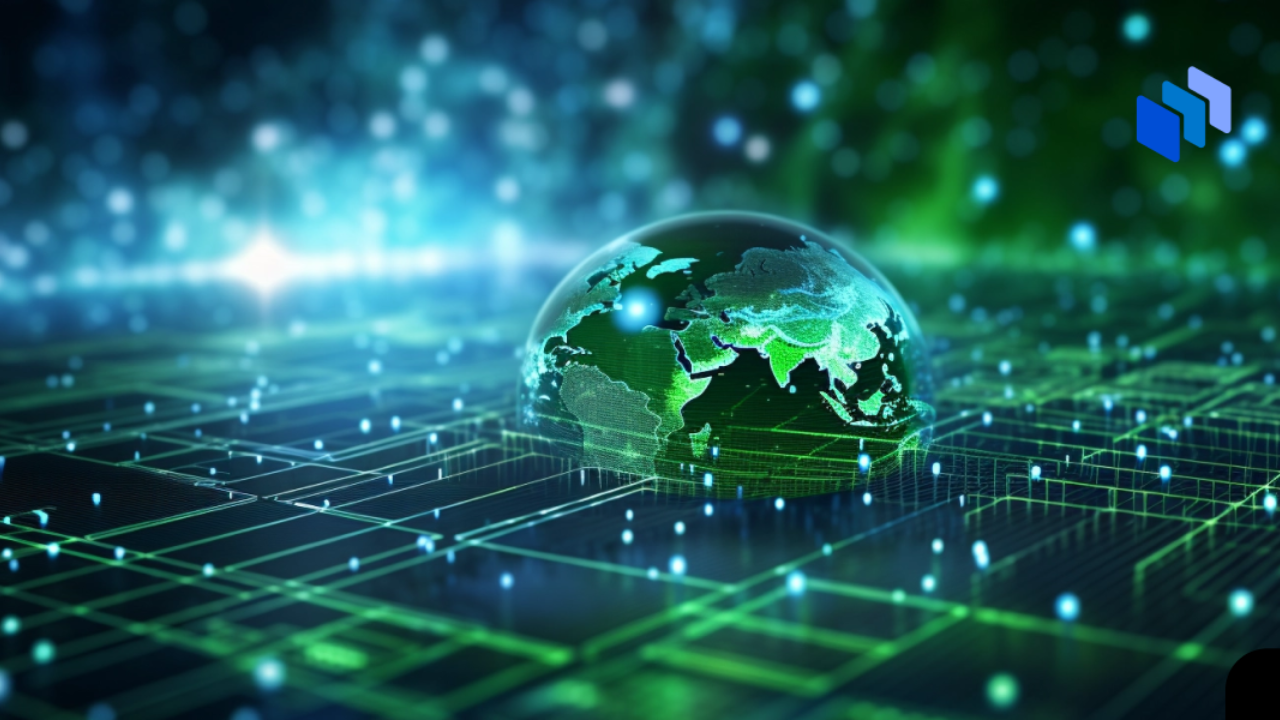Exploring the Potential of Web3 and Its Benefits: The New Frontier of the Internet
 Jayasuriyan
Jayasuriyan
Discover the impact of Web3 on today's web. Its benefits include security, privacy, smart contracts, and asset tokenization. Decentralization empowers users, transforming the financial industry, art, games and more. In the fast-paced world of technology, there are always innovations that capture attention and change the way we interact online. One of the most exciting developments in recent times is Web3, a new generation of internet powered by decentralized technologies and blockchain. In this article, we will explore what Web3 is, how it differs from Web2, and the revolutionary benefits it offers to users, businesses, and developers in the digital age.
What distinguishes Web3 from Web2 and what does it mean?
To understand the potential of Web3, we must first address the distinction between Web2 and Web3. Web2, or the web as we know it today, is the current version of the internet where most of our online activities take place. It is characterized by centralized platforms that control user data and information. In other words, we place our trust in centralized companies and organizations with our personal data and online actions.
In contrast, Web3 represents a revolution in which users take full control of their data and actions through decentralized technologies and blockchain. Instead of relying on centralized entities, Web3 is based on a network of interconnected nodes, where information is stored in a distributed and secure way. This means that user data does not reside on a single server or company, making unauthorized access and manipulation of information difficult.
One of the main differences between Web2 and Web3 lies in data control. While in Web2 users trust their data to companies and platforms, in Web3, users own their data and have the power to decide what information to share, who to share it with, and for how long.
The Benefits of Web3
1. Improved Security and Privacy
One of the most notable benefits of Web3 development company is its focus on security and privacy. Blockchain technology, which is the backbone of Web3, ensures data security through cryptography and decentralization. Data is stored in blocks on an immutable chain, making unauthorized modification of information difficult and preventing cyber attacks.
Additionally, Web3 protects user privacy by allowing users to control their data. Users can decide what information to share, who to share it with, and for how long. This reduces the risk of mass data collection and misuse of personal information that occurs on centralized Web2 platforms.
2. User Empowerment
Another fundamental benefit of Web3 is user empowerment. By giving users full control of their data and online actions, Web3 puts the power back in the hands of those who really matter: the people. Users no longer have to blindly trust companies and organizations; instead, they own their digital identity and decide how to interact in the digital world.
This empowerment not only improves privacy and security, but also encourages greater transparency and accountability online. Users can audit how their data is used and can be assured that their information will not be used without their consent.
3. Smart Contracts: Trusted Automation
A revolutionary aspect of Web3 is smart contract technology. Smart contracts are self-executing agreements that are based on predefined rules and stored on the blockchain. These contracts eliminate the need for intermediaries in many transactions and processes, reducing costs and speeding up operations.
In Web3, smart contracts can be applied to a wide range of use cases, from money transfers to complex business agreements. These contracts are automatically executed when predefined conditions are met, ensuring a high degree of reliability and transparency in transactions.
4. Asset Tokenization: Access to New Opportunities
With Web3, asset tokenization is another significant innovation. Tokenization involves converting real-world assets, such as real estate, artwork, and stocks, into digital tokens that can be represented and transferred on the blockchain.
This tokenization has several benefits. First, it allows asset fractionalization, meaning that an asset can be divided into smaller parts, making it easier to invest in and access assets that were previously out of reach for many investors. For example, tokenizing a property allows multiple investors to own a fraction of it, democratizing real estate investing.
Additionally, asset tokenization opens up new liquidity opportunities as tokenized assets can be traded on decentralized markets. This eliminates the need for intermediaries and gives investors greater flexibility and options to manage their assets.
5. Decentralized Digital Identity: Simplifying Authentication
Web3 also offers decentralized digital identity solutions. Instead of relying on a single identity provider, users can have unique and protected digital identities on the blockchain. This improves online security by preventing unauthorized third parties from accessing the user's personal information.
Additionally, decentralized digital identities simplify online authentication. Users can use their digital identity across multiple apps and online services, eliminating the need to create and remember multiple accounts and passwords.
The Future of Web3
Although Web3 is still in its early stages, its potential to transform the way we interact online is undeniable. Some areas expected to be most impacted by Web3 include:
1. Decentralized Finance (DeFi)
Web3 has given rise to decentralized finance, or DeFi, which are financial applications built on blockchain technology that allow people to access financial services without traditional intermediaries. This includes lending, interest generation, asset trading, and participation in decentralized financial markets.
DeFi has opened up opportunities for those who previously did not have access to financial services and has democratized access to a wide range of financial products. Furthermore, the transparency and security inherent in DeFi applications inspire trust in users.
2. Art and Entertainment
Arts and entertainment are also benefiting greatly from Web3, especially with the rise of non-fungible tokens (NFTs). NFTs are unique digital assets that represent ownership of online items such as digital artwork, music, and virtual collections.
Tokenization of arts and entertainment allows creators to monetize their work and receive income directly from buyers, without the need for intermediaries. NFTs also provide collectors with guarantees of authenticity and exclusive ownership, which has given rise to an exciting new digital market.
3. Decentralized Games
Decentralized gaming is another area where Web3 is making its mark. By using blockchain technology, decentralized games enable the ownership and exchange of game assets, as well as the creation of more transparent and fair gaming environments.
Players can own the items and characters they obtain in the game, allowing them to trade or sell assets on online marketplaces. The transparency of the blockchain also ensures that the game results are random and unbiased.
4. Decentralized Government
Decentralized government is another field that has been revolutionized by Web3. This approach allows communities and users of a platform to make decisions about its operation and development through voting mechanisms on the blockchain.
With decentralized governance, updates and changes to the platform are decided by those who actually use it, rather than being imposed by a centralized entity. This increases transparency and community participation in decision making.
5. Internet of Things (IoT) and Web3
Another promising area is the integration of Web3 with the Internet of Things (IoT). The IoT is a network of interconnected smart devices that collect and share data online. By combining Web3 with IoT, devices can operate autonomously and securely using smart contracts.
This integration enables new applications in areas such as home automation, logistics and industry, where devices can interact and make decisions in real time without the need for intermediaries.
Challenges and Considerations
While Web3 development companies offer a number of exciting benefits, it also presents challenges and considerations that must be addressed for widespread adoption.
1. Scalability
Scalability is one of the key challenges for Web3. Blockchain technology, in its current form, has limitations in terms of the number of transactions it can process simultaneously. As more people adopt Web3, scalability will need to be improved to avoid bottlenecks and long processing times.
2. Interoperability
Another important challenge is interoperability between different networks and blockchains. Currently, there are numerous blockchains that operate independently, making it difficult to transfer assets and data between them. For Web3 to reach its full potential, it will be necessary to develop standards and protocols that allow interoperability between different blockchains.
3. Mass Adoption
Mass adoption of Web3 is essential to its long-term success. For this decentralized revolution to reach its full potential, both users and businesses need to become familiar with and adopt the new technologies and concepts that Web3 offers. Education and awareness of the benefits of Web3 will be essential to encourage its adoption.
Conclusion
Web3 represents an exciting revolution in the way we interact online. By empowering users with control of their data and actions online, Web3 offers greater security, privacy, and transparency compared to centralized Web2 platforms. With benefits ranging from enhanced security and privacy to asset tokenization, smart contracts and decentralized digital identity, Web3 has the potential to transform a wide range of industries and sectors.
Subscribe to my newsletter
Read articles from Jayasuriyan directly inside your inbox. Subscribe to the newsletter, and don't miss out.
Written by

Jayasuriyan
Jayasuriyan
Digital marketing executive